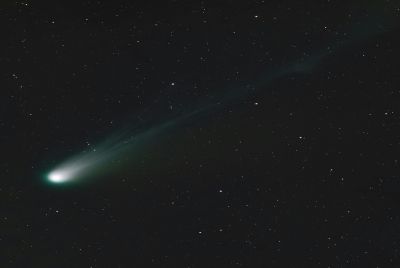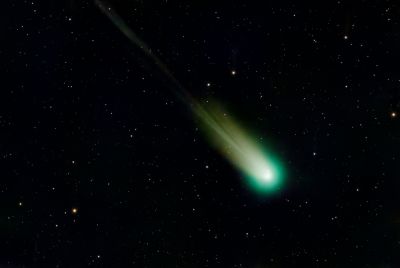Avi Loeb Says C/2025 V1 and 3I/ATLAS 'Connection' Could Be 'Artificial'

Harvard astrophysicist Avi Loeb has sparked another wave of controversy by proposing that the newly discovered comet C/2025 V1 and interstellar object 3I/ATLAS might share an artificial connection.
In a recent essay published on Medium, Loeb speculated that if any link exists, it could involve non-gravitational propulsion—an effect that would imply an intelligent, possibly technological, origin.
Two Interstellar Objects Under The Spotlight
According to People, 3I/ATLAS was first detected on July 1, 2025, by the ATLAS survey telescope in Hawaii, becoming the third confirmed interstellar object to enter our solar system.
Its hyperbolic trajectory, high speed, and 5-degree tilt from the ecliptic plane have led Loeb and other researchers to question whether it might be a technosignature rather than an ordinary comet, as discussed in a preprint on arXiv.
By contrast, C/2025 V1 is described by Loeb as 'nearly interstellar' because of its extreme orbital eccentricity and inclination.
In his Medium essay, Loeb notes that while a connection between the two objects has been suggested, 'C/2025 V1 is not related to 3I/ATLAS if it did not employ non-gravitational propulsion.'
The closest separation of the two orbits is 75 million kilometres (0.5 AU), and the objects were never closer than 225 million kilometres (1.5 AU) without propulsion.
Why Scientists Are Intrigued—and Sceptical
Loeb argues that 3I/ATLAS shows several anomalies that merit scientific curiosity, including its orbit's alignment with the solar system plane, the absence of a clear comet-like tail in specific images, and potential non-gravitational acceleration--details he explored in his blog post, "The Inspiration Delivered by 3I/ATLAS to Our Doorstep".
Loeb stresses that 'the simplest hypothesis is that 3I/ATLAS is a comet,' but says scientists should remain open-minded and 'assume less rather than more' when analysing such phenomena.
However, many astronomers remain unconvinced. According to The Guardian, NASA's Tom Statler, lead scientist for small bodies in the solar system, dismissed Loeb's claim, saying, 'It looks like a comet. It does comet things.'
Other NASA researchers cited ultraviolet observations that detected hydroxyl (OH) emissions typical of water-driven outgassing, reinforcing the view that 3I/ATLAS is behaving like a natural comet rather than an alien probe, as shown in the arXiv dataset.
Loeb Doubles Down On Propulsion Hypothesis
Despite widespread scepticism, Loeb maintains that evidence of propulsion or coordinated movement could reveal a 'connection' between the two objects.
He wrote that if C/2025 V1 and 3I/ATLAS originated from the same source--possibly a technological mothership--their motion should reveal signs of non-gravitational thrust, which have not yet been observed.
'One of the fundamental unknowns regarding 3I/ATLAS is whether it represents a technological mothership that released mini-probes into the inner solar system,' Loeb stated on Medium.
What Comes Next
Astronomers continue to track both objects. IFLScience reported that 3I/ATLAS will make its closest approach to Earth on December 19, at approximately 1.8 astronomical units (AU) — roughly 270 million kilometres.
Researchers will monitor its trajectory, jet activity, and deviations from predicted motion to determine whether any propulsion-like effects occur.
Meanwhile, the origin of C/2025 V1 remains uncertain. Some experts believe it could be a long-period comet from the Oort Cloud, rather than a true interstellar visitor.
Loeb cautioned against "conflating proximity in discovery with common origin," arguing that rigorous observation must precede any extraordinary claims.
Beyond Astronomy: Why This Matters
While the debate over alien probes may seem far-fetched, Loeb's ideas highlight the human drive to question cosmic mysteries.
His work challenges scientists and the public alike to think critically about how we interpret unusual data.
As Loeb wrote, "The scientific learning process is an unfolding detective story during which we make mistakes and update our opinions as we gather more evidence."
For many in the field, Loeb's controversial stance highlights a broader truth: science advances not only by confirming what we know, but also by daring to investigate what we don't.
© Copyright IBTimes 2025. All rights reserved.




















